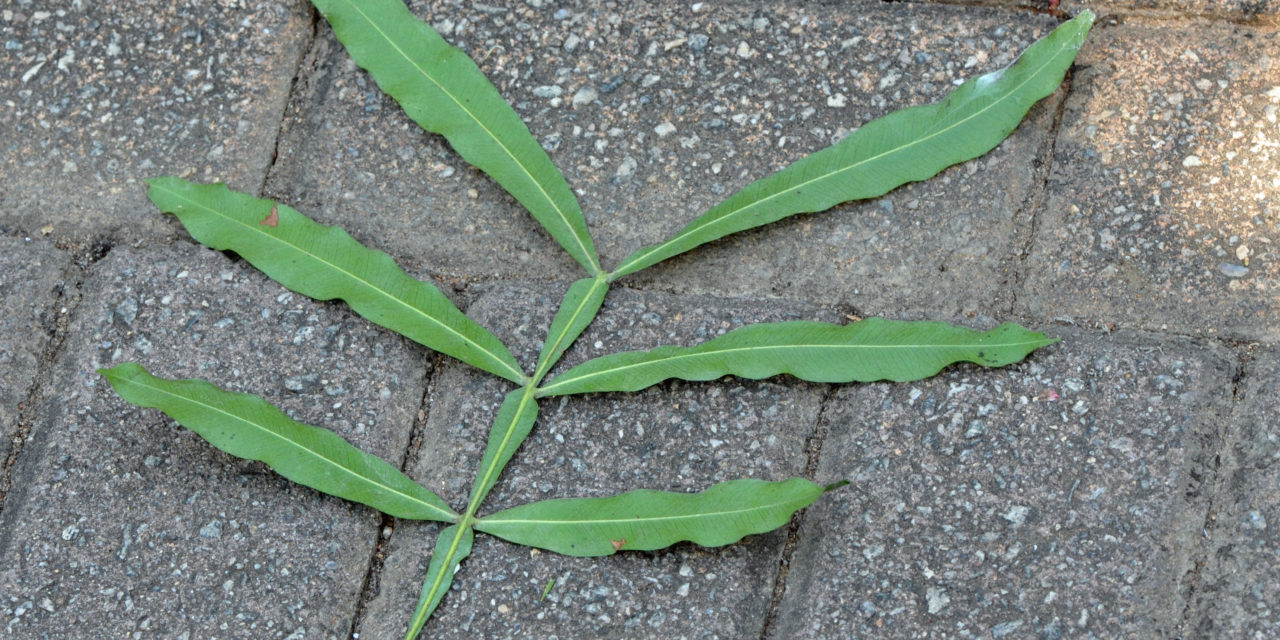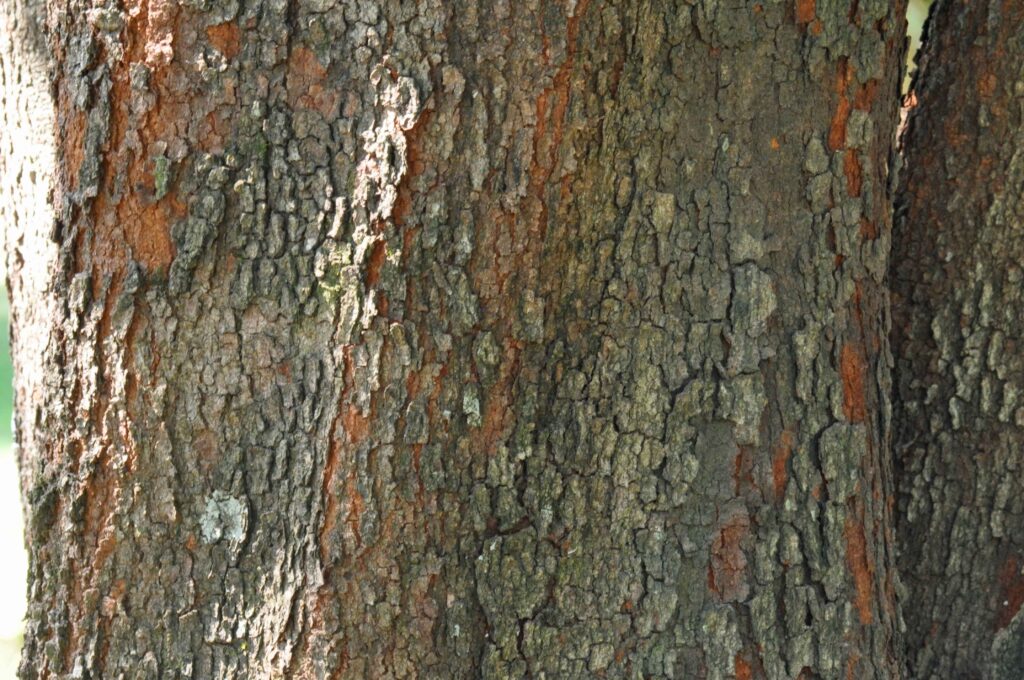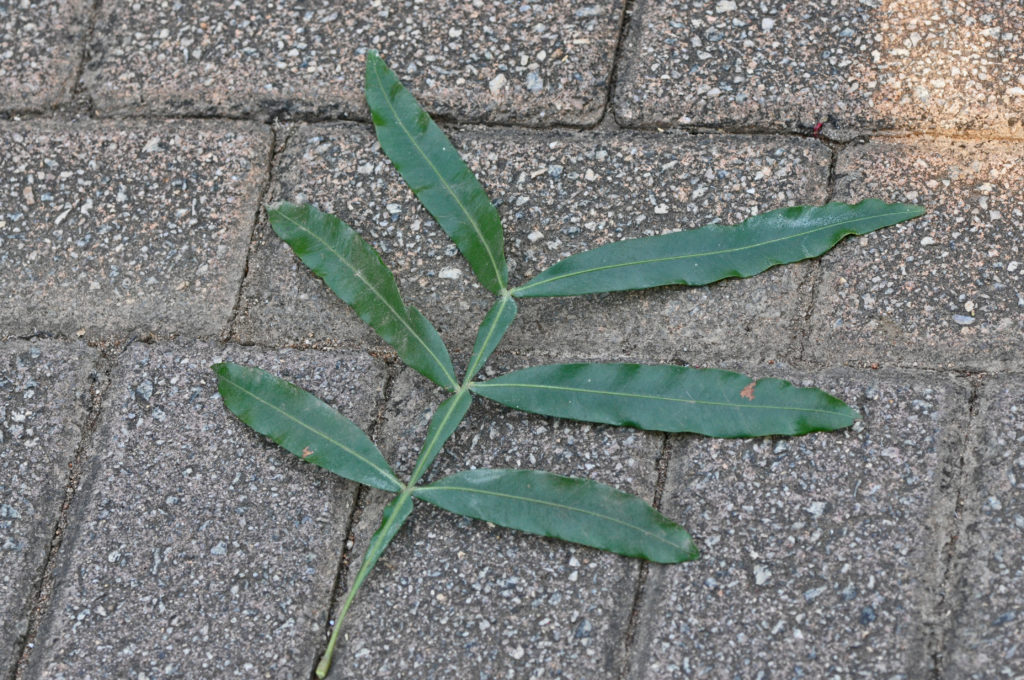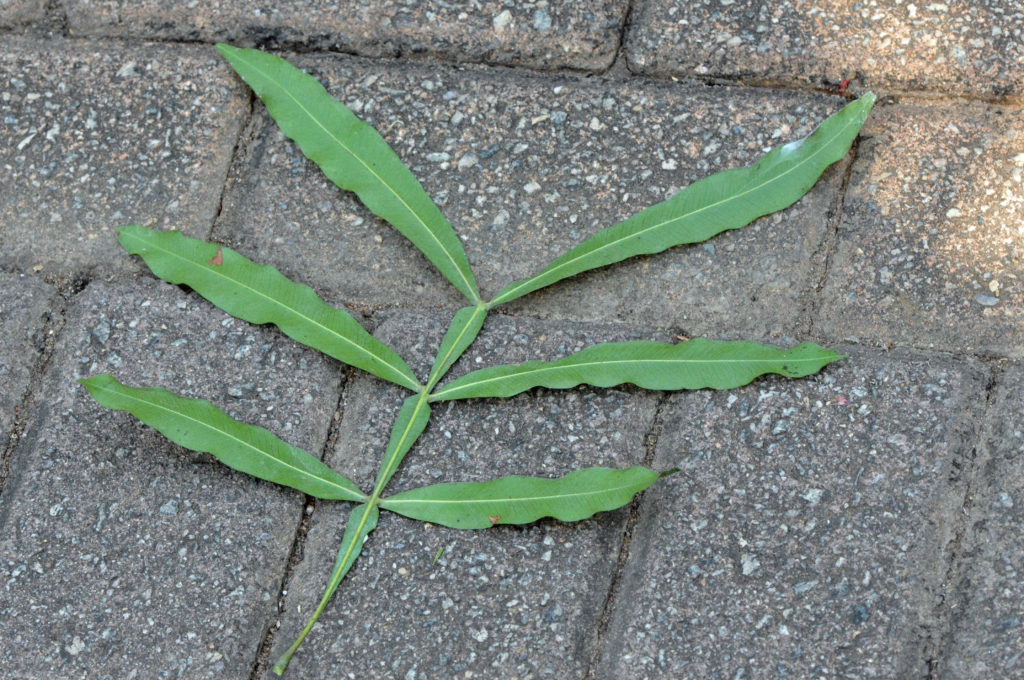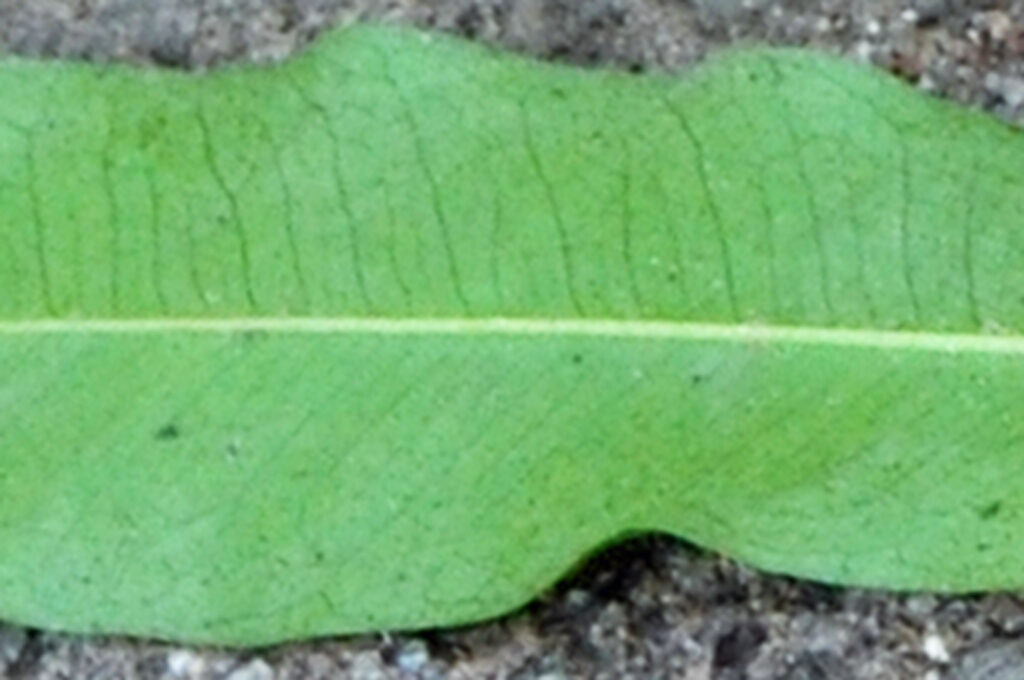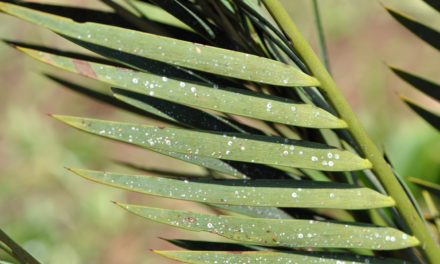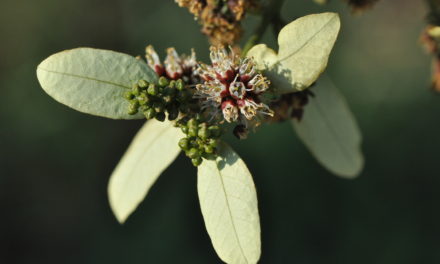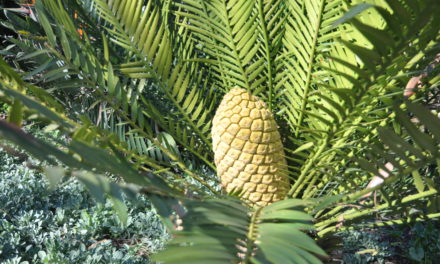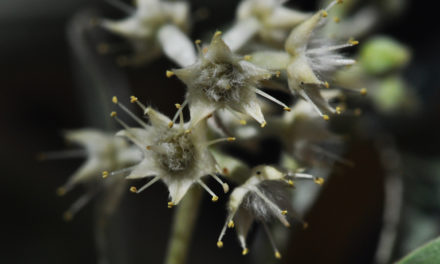General Info – summary
This attractive, dioecious and thornless Tree may reach 25m high and develops an almost spherical crown. Mature bark may have orange underbark. Paripinnate Leaves with widely spaced leaflets are fern-like. The midrib & petiole have leaf-like wings. Tiny, white, 5-merous, functionally unisexual Flowers are in terminal or axillary panicles. The Fruit is a small, one seeded drupe with a persistent style and sepals.
Description
Filicium decipiens
Previous names: Jurighas decipiens, Pteridophyllum decipiens.
Zimbabwe No. 612.
Common names: (Eng) Fern Leaf, Fern Leaf Tree, Fern Tree, Japanese fern tree.
Family: Sapindaceae. (Soapberry and Litchi/Lychee family). This family has about 135 genera and about 1 800 species including species that are trees, shrubs or lianas (a climbing plant that is woody and hangs from trees). The alternate, usually compound Leaves often lack stipules (leaf stalk) and have a swollen base. The small, usually unisexual, Flowers may be regular or irregular and develop in racemes or panicles. The Calyx has 4-5 lobes and, when present, the Corolla has 3-5 petals. There are between 5 and 24 Stamens, which have free Filaments and the Anthers have 2 pollen sacs. The superior Ovary may have up to 3 styles, each ending in a simple stigma. There are 27 species in 14 genera in southern Africa. Local genera with trees on this website include Allophylus, Atalaya, Dodonaea, Erythrophysa, Filicium, Hippobromus, Pappea, Smelophyllum and Stadmannia.
Name derivation: Filicium – Latin filix: meaning fern. This refers to the fern-like leaves. decipiens – deceptively fern-like (leaf).
Conservation Status: Not found in South Africa. Near threatened in Zimbabwe.
Tree
This medium to large sized evergreen Tree grows up to 26m high in central Africa, but it is usually much less in Mozambique. The densely rounded Crown expands, becoming attractive and almost spherical. Leaf scars are prominent on young glabrous (hairless) stems. No thorns are present, and the straight Trunk does not develop buttresses. The initially smooth, greyish brown easily pealing and variable Bark may become rough and flaking, revealing an orange underbark (photo 754).
- 754 2014.09.14 Lowveld BG. Photo: David Becking.
Leaves
In this evergreen tree, the resinous, fern-like Leaves are glossy dark green above and lighter below. The spirally arranged compound leaves are up to 35cm long. They are usually paripinnate (pinnately compound leaf ending in a pair of leaflets – photo 755). The prominent Midrib (the main rib of a leaf or leaf-like part, a continuation of the petiole) is light green and clearly visible on both sides. In the spaces between the widely spaced leaflets is the rachis (an extension of the petiole of a compound leaf that eventually bears the leaflets. Here distinct green, leaf-like Wings that are up to 1,5cm wide are present. These wings increase in width towards the pair of Leaflets above (photo 758). There are up to 11 pairs of glabrous (hairless) leaflets present – each very widely spaced leaflet and up to 15 x 3cm. Leaflets are oblong to oblong–elliptic, glossy green above and a lighter green below (photo 758). The wavy Margin is entire (with a continuous margin, not in any way indented). The many side Veins are more distinct on the lower side – (photo 758R). The nearly opposite Leaflets are obscurely glandular-punctate (punctate – with translucent or coloured dots, depressions, or pits). These become visible when the leaflet is held against a strong light). The Apex tapers or is rounded and may be notched. The Base is asymmetric (not equal to the opposite side as in the bases of some leaves). The Midrib (the main rib of a leaf or leaf-like part, a continuation of the petiole) is clearly visible on both sides (photos 755 & 758). The Petiole (leaf stalk) is up to 10cm long and conspicuously increasingly winged from about one third of its length towards the lowest leaflets (photo 758). Petiolules (stalks of leaflets) are absent.
- 755 2014.09.14 Lowveld NBG. Photo: David Becking.
- 758 2014.09.14 Lowveld NBG. Photo: David Becking.
- 758R 2014.09.14 Lowveld NBG. Photo: David Becking.
Flowers
This plant is dioecious (having fertile male and female parts on separate plants). However, both are present – but either the male or the female is fertile. The 5-merous fragrant Flowers are whitish to yellow or green and may have a pink tint. Individual flowers are very small – up to 3mm wide. They occur in terminal or axillary Panicles (indeterminate, branched inflorescence with stalked flowers) that are up to 20cm long. There are 5 persistent Sepals that are imbricate (overlapping as shingles on a roof) and glabrous (hairless). In Male Flowers, the 5 Petals are as long as sepals. Here protruding Stamens (male reproductive part of a flower) are present. A relatively thin Filament supports the terminal Anthers that produce pollen). In the Female Flowers, the 5 petals are shorter than those in the male flowers. Here non-protruding stamens and unopened anthers are present. There is a single Pistil (a unit of the Gynoecium, the female element of the flower, composed of the Ovary, Style and Stigma). Only 1 of 2 ovules develops in the hairy Ovary that is superior (one that is free from the calyx or perianth). The Pedicel (stalk of a single flower) is up to 3mm long. (Early summer – depending in the latitude).
Fruit
The small, hairless, ovoid to almost spherical Fruit is an inconspicuous Drupe (a fleshy, 1-seeded indehiscent fruit with the single seed enclosed in a stony endocarp; stone fruit e.g. peach). It is about 6 x 4mm, rests on a persistent stalk and turns from green to purple when mature. A persistent Style is visible as are the backward bending persistent Sepals. Each shiny drupe contains a single, membranous winged Seed. (Mar).
Distribution & Ecology
These plants are found in Zimbabwe, present but scarce in Mozambique (central and South), Zambia, East Africa and northwards to Ethiopia. They also occur in southern India, Madagascar, Sri Lanka and Fiji. These slow growing Trees occur in evergreen forests, forest margins and ravines. They usually grow close to water and are sensitive to temperatures below -3 degrees C. They occur in mountain foothills and usually below an altitude of 1 600m. Birds that consume the Fruit are largely responsible for seed dispersal.
Ethnobotany
Useful Timber is obtainable from this tree. The Wood is hard and dense – although the trunk is relatively short. This is a very attractive tree with its fernlike leaves and would be an asset to a suitable garden.
References
Burrows, J.E., Burrows, S.M., Lotter, M.C. & Schmidt, E. 2018. Trees and Shrubs Mozambique. Publishing Print Matters (Pty) Ltd. Noordhoek, Cape Town.
Coates Palgrave, M. 2002. Keith Coates Palgrave Trees of Southern Africa, edn 3. Struik, Cape Town.
http://flowersofindia.net/catalog/slides/Fern%20Tree.html
http://www.biotik.org/india/species/f/filideci/filideci_en.html
http://www.zimbabweflora.co.zw/speciesdata/species.php?species_id=137530
http://www.iplantz.com/plant/718/filicium-decipiens/
https://florafaunaweb.nparks.gov.sg/special-pages/plant-detail.aspx?id=2918
Filicium decipiens (Wight & Arn.) Thwaites — The Plant List

